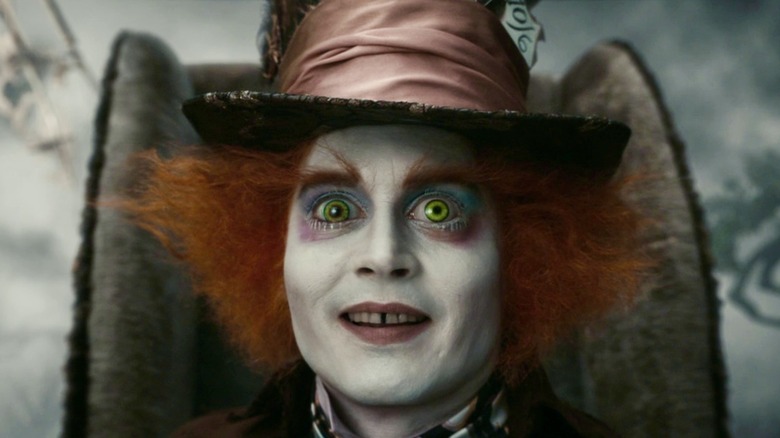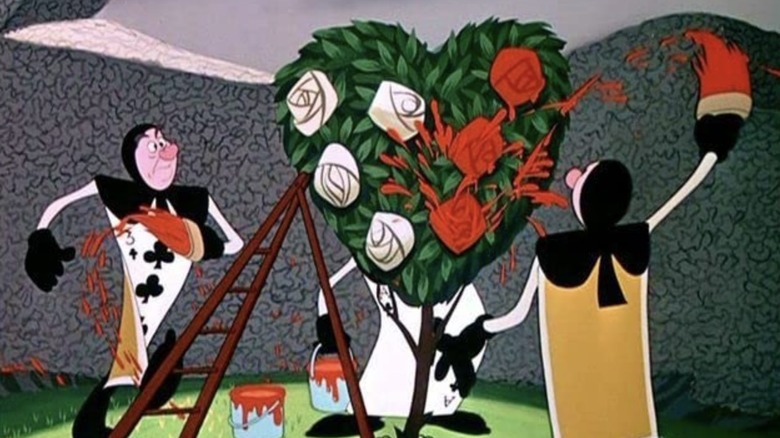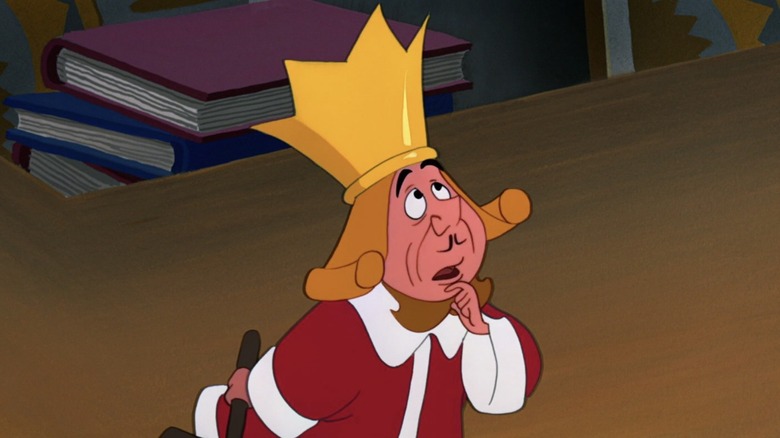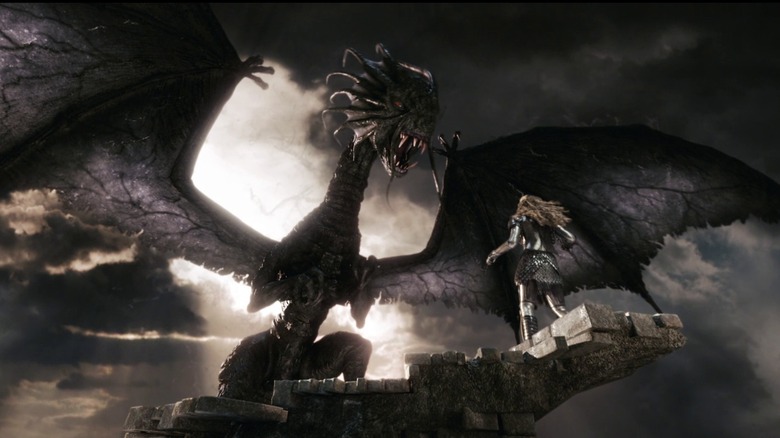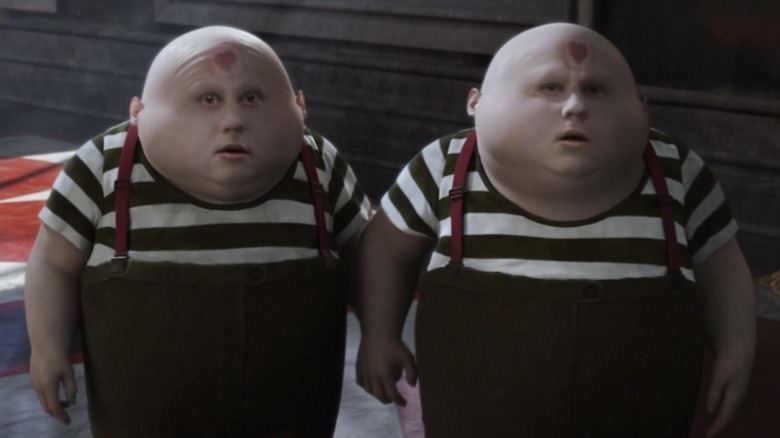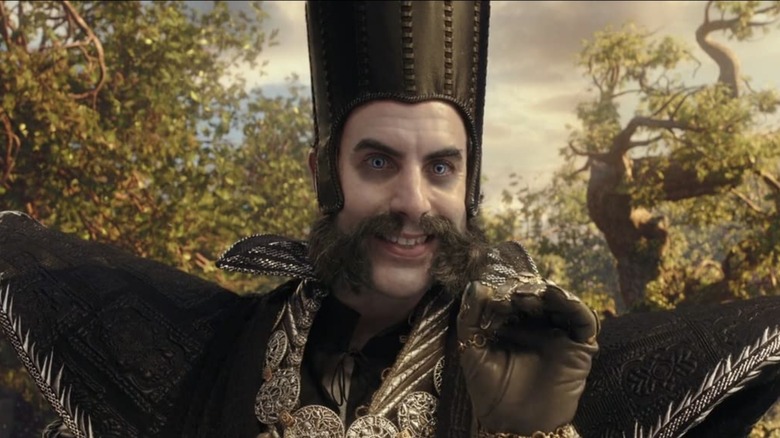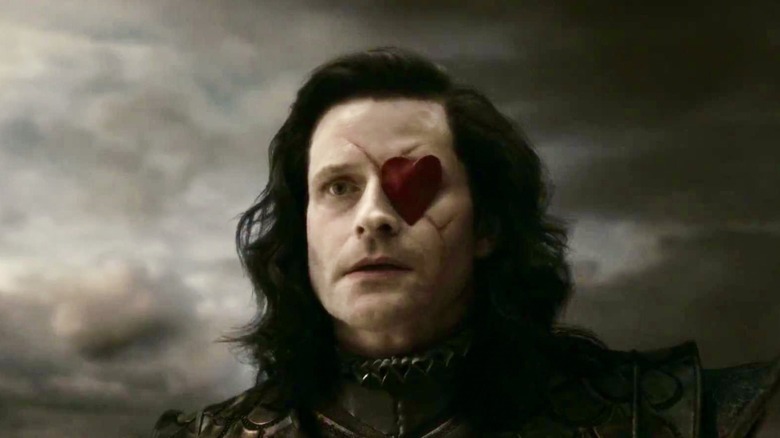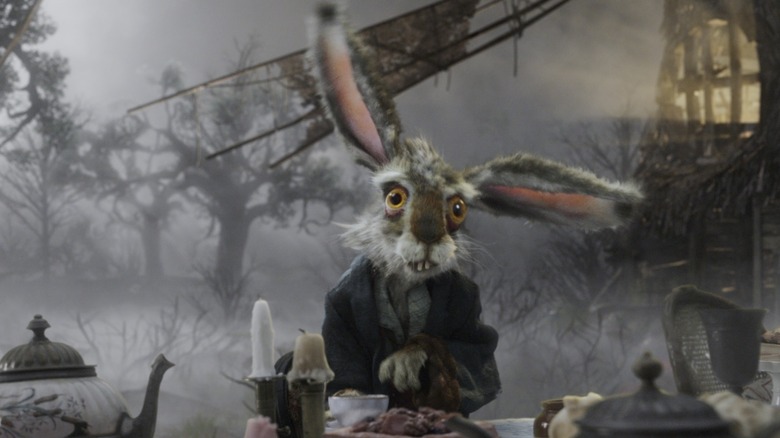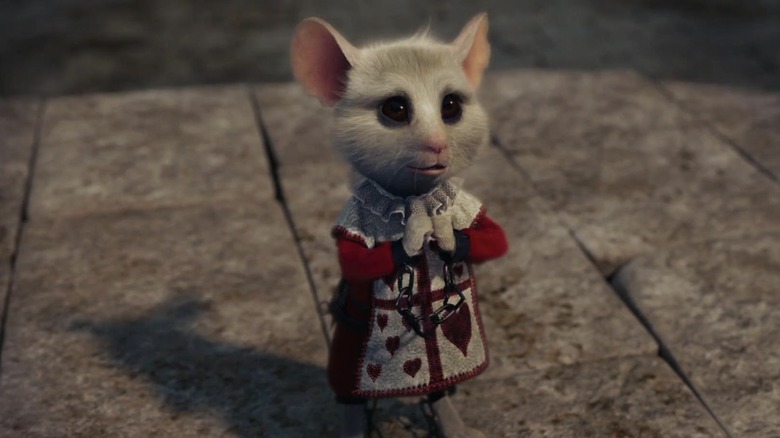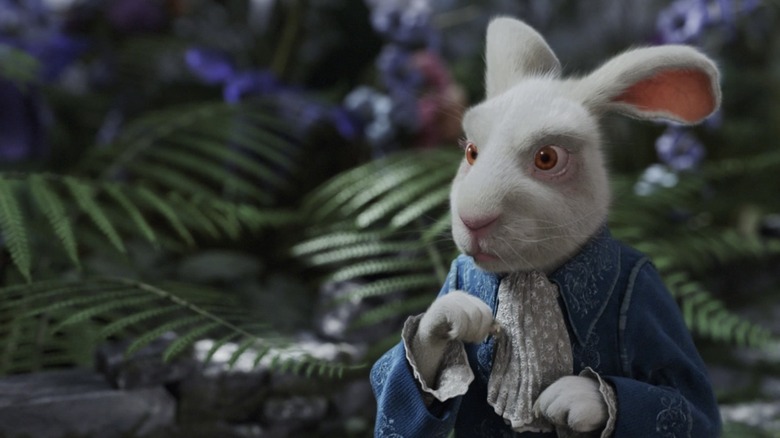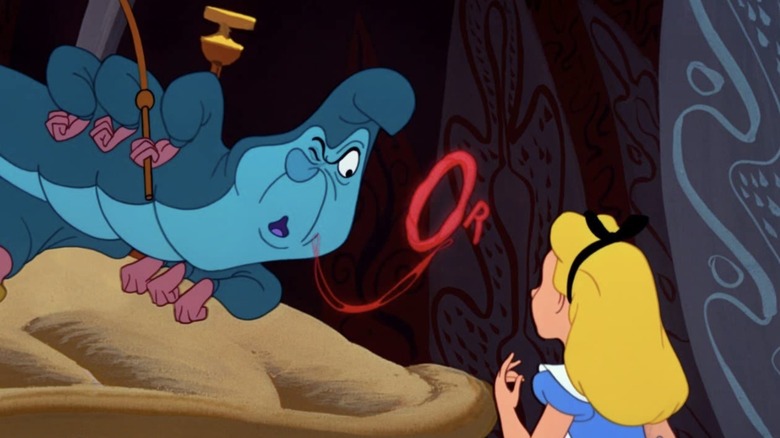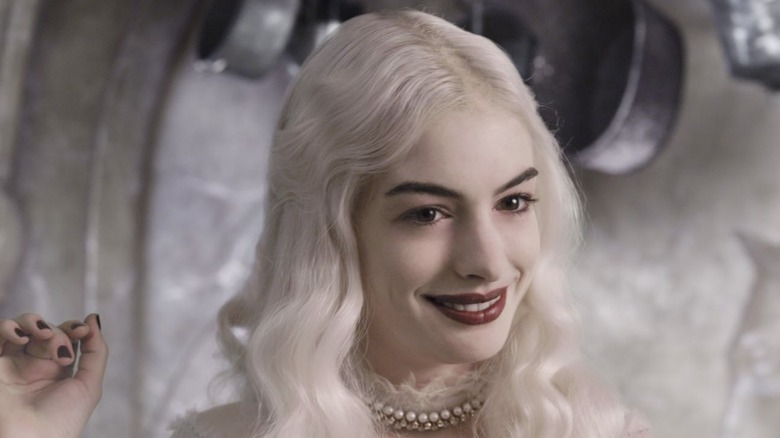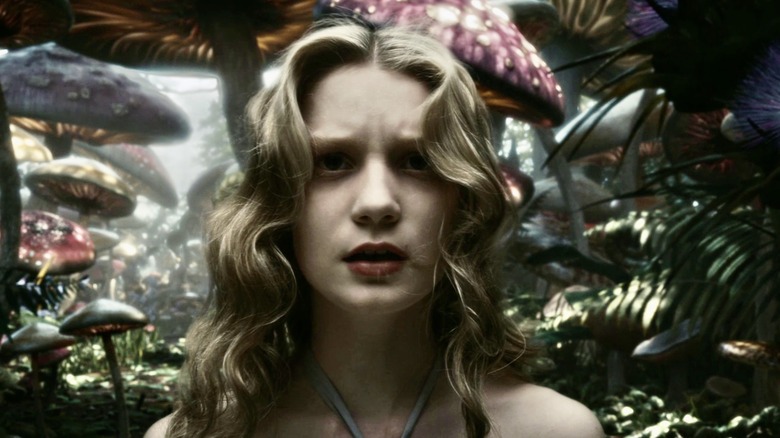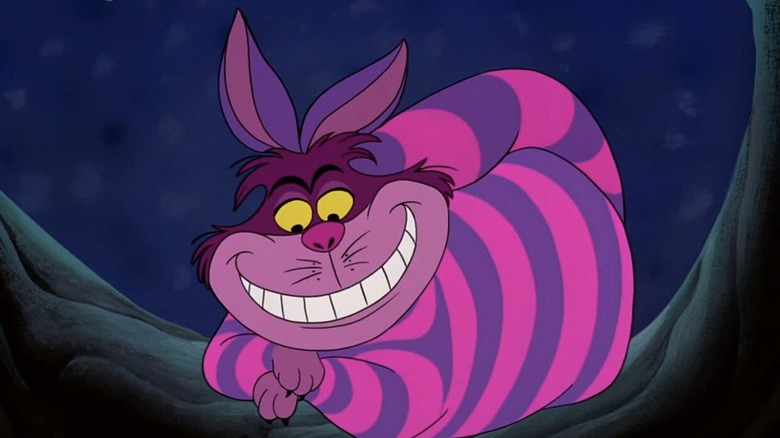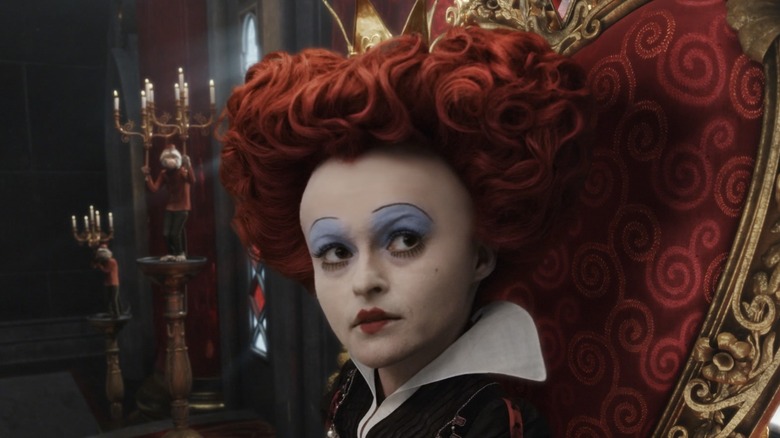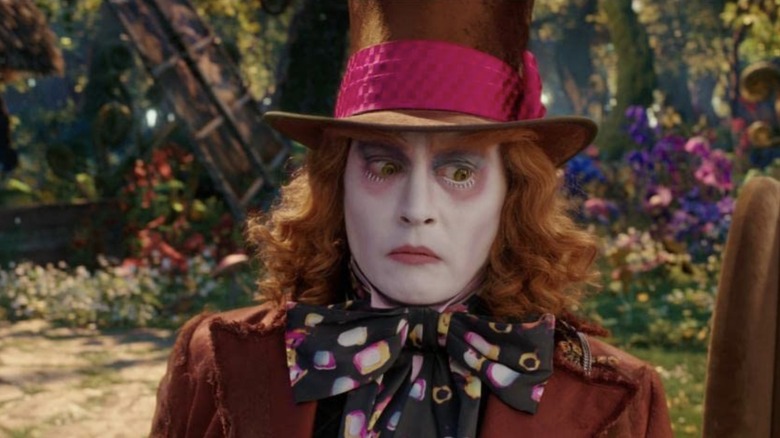15 Most Popular Alice In Wonderland Characters Ranked Worst To Best
"Alice's Adventures in Wonderland" was first published under the pen name Lewis Carroll in 1865 by the English mathematician Charles Lutwidge Dodgson, and in 1871 the sequel "Through the Looking-Glass and What Alice Found There" was published (per Britannica). This book series has remained a beloved children's classic, inspiring multiple film interpretations over the years. Many of us first encountered Alice and the creatures of Wonderland in Disney's 1951 film "Alice in Wonderland" an animated feature-length movie with musical numbers. Disney's film is a loose adaptation of Carroll's Wonderland books, using elements and characters from both books in an original plot.
In 2010 director Tim Burton brought a modern perspective to the beloved stories, bringing a 19-year-old Alice back to Underland for a new adventure with many of our favorite characters in "Alice in Wonderland" starring Mia Wasikowska as Alice, Johnny Depp as Mad Hatter and Helena Bonham Carter as the Red Queen. The cast reprised their roles in "Alice Through the Looking Glass" with a different director taking the helm in 2016.
In these modern movies, many of the characters were given more complex background stories, original names and more screen time. Despite being a beloved book and film series, some characters Alice meets during her adventures aren't that interesting. Some are downright annoying, while others seem pointless and unimportant to the overall plot of the story. We've rated the 15 most popular characters from worst to best. And away we go!
The Painting Cards
The Painting Cards are the Queen's gardeners. In both the book and the 1951 animated film, they planted white rose bushes rather than red by mistake. Knowing the Queen will be furious — the roses aren't her signature color — they have taken to painting the roses red. This is one of the most memorable musical numbers in Disney's 1951 animated film ending with the cards being carried away by the Queen's army for execution, and Alice forced to play croquet with the Queen. This is a discrepancy with the original novel, where the cards are hidden and are not executed.
While The Painting Cards are memorable characters, their function in the story is small. While they introduce Alice to how perilous life at the royal court is, The Painting Cards do not have names, they do not have a backstory and we do not revisit them in either of the modern movies. They might be one of the least interesting characters in the world of Wonderland, but their song is catchy and one aspect of Disney's animated film people always remember.
King of Hearts
The King of Hearts doesn't have a huge role in the 1951 animated "Alice in Wonderland" but he is a memorable character. He is meek and overshadowed by his horrible wife, the Queen of Hearts. From the dismissive way the White Rabbit announces the King of Hearts, it is clear his role at court is merely for looks and it is the Queen who runs the show, with her outrageous temper and frequent beheadings.
The King is the one who suggests Alice stand trial rather than be executed and he is far kinder to her than many characters Alice meets at the royal court. Interestingly, in the novel the King of Hearts is mean, having a personality similar to his evil wife, rather than the emasculated Disney version. The King isn't in the 2010 movie "Alice in Wonderland" because the Red Queen beheaded him, rather than lose him to her sister, the White Queen.
The Jabberwock
Lewis Carroll's nonsense poem "Jabberwocky" from his 1871 sequel "Through the Looking-Glass and What Alice Found There" is represented in the 2010 Tim Burton adaptation "Alice in Wonderland" as the Red Queen's henchmen. A powerful dragon-like creature helping the Red Queen maintain dominance over her subjects through fear and death. In Burton's adaptation, it has been foretold Alice will come back to Underland to slay the Jabberwock, returning the crown to the White Queen.
We also see how the Red Queen used the Jabberwock to usurp the throne from her sister, the White Queen, in "Alice Through the Looking Glass" when Alice goes back in time to help the Mad Hatter find his family. While the Jabberwock doesn't have an elaborate back story, the beloved poem has historical literary significance, and it was good to see it represented in the modern Disney adaptations, since it was left out of the original animated movie.
Tweedledee and Tweedledum
The twins Tweedledee and Tweedledum are actually characters from Carroll's second book "Through the Looking-Glass and What Alice Found There" — but they are some of the first people from Wonderland Alice meets in Disney's 1951 animated film. Their presence in the animated movie has no importance to the plot, and let's face it: They are annoying and speak utter nonsense — something Alice thought she would enjoy until she found herself exasperated by their jibber-jabber.
Tweedledee and Tweedledum are prominently featured in "Alice in Wonderland" and "Alice Through the Looking Glass." Although they still aren't too bright, and speak nonsense in the modern movie, they are a part of Alice's group of friends and allies in Underland, playing a more important role in the plot and the action of both modern films. Although these movies expand the characters, Tweedledee and Tweedledum are still the most annoying and least interesting of Alice's friends in Underland.
Time
In the books, the only mention of Time is in the first novel, "Alice's Adventures in Wonderland" when Alice meets the March Hare, the Mad Hatter and the Dormouse at their tea party. In the book, they aren't having an unbirthday party. The group has somehow wronged Time, and are now trapped in a never ending tea party as their punishment. Of course, in the 1951 animated film there is much talk of being late, and watches that don't keep time, but they do not personify Time.
In "Alice Through the Looking Glass" Time has a large role to play in the movie's plot. Alice steals the chronosphere from Time so she can time-travel back to find and save the Mad Hatter's family, who everyone believed died when the Red Queen usurped the crown. Although Time is initially cast in the role of an antagonist, pursuing Alice across the oceans of time, by the end of the film, Time is revealed to not be cruel or villainous, but a part of life.
Alice understands Time is not her enemy, or a thief as she told her mother. He was trying to protect everyone in Underland from the disruption she created when she stole the chronosphere. This personification of Time in "Alice Through the Looking Glass" was one of the more interesting original elements in the film, and Sacha Baron Cohen was perfect for the role.
Knave of Hearts
In Lewis Carroll's first book, "Alice's Adventures in Wonderland" the Knave of Hearts stands trial for stealing the Queen's tarts, rather than Alice standing trial for upsetting the Queen during their game of croquet as she did in the 1951 Disney animated film. In Burton's "Alice in Wonderland" the Knave of Hearts has a new expanded role as the Red Queen's right-hand man and leader of her army. The Knave of Hearts (Crispin Glover) is a daunting figure towering over the people of Underland.
It seems Burton conflated the Knave of Hearts from Carroll's first book with the Red Knight from his second book to make this character. It is the Knave of Hearts who is to find and imprison Alice once the Red Queen learns she has come back to Underland to battle the Jabberwock. In "Through the Looking-Glass and What Alice Found There" the Red Knight attempts to capture Alice as well.
After the Jabberwock is defeated and the White Queen banishes both the Red Queen and the Knave of Hearts from Underland, it becomes clear his loyalty to the Red Queen was conditional upon her power and status. This development certainly made the Knave of Hearts a much more interesting character than he was in the original book. We only wish he had appeared in "Alice Through the Looking Glass."
March Hare
The March Hare is an agent of chaos, and the Mad Hatter's constant companion. He just might be "stark raving mad" as Alice might say. Much of what he says is crazy and not relevant to anything, or completely unhelpful. In Burton's "Alice in Wonderland" the March Hare is the White Queen's cook, but he's a little crazy in the kitchen, throwing things and making a mess. Although the March Hare doesn't bring much to the Wonderland stories other than chaos and maniacal laughter, he is a principal character in Wonderland.
The March Hare, the Mad Hatter and Alice have the distinction of being in both of Carroll's children's books, the 1951 Disney animated classic and the modern films. Even if he isn't a big player in the plot of these versions of Wonderland, he is always there adding his special brand of crazy to the mix — and we'd miss him if he wasn't around.
Dormouse
In the original book and 1951 Disney animated movie "Alice in Wonderland" the Dormouse is the sleepy and dopey companion to the March Hare and the Mad Hatter taking part in the never ending tea party. In the book and the Disney cartoon the Dormouse's contribution is reciting a poem during the tea party and having a fit when Alice mentions her cat, only settling down after they have put jam on the Dormouse's nose.
The Dormouse's character is expanded into a brave Dormouse named Mallymkun, in the modern movies. She carries a sword, which is actually a sewing needle the Mad Hatter gave her, and is dedicated to the resistance against the Red Queen's rule. When Alice first arrives back in Underland, the Dormouse plucks out the eye of the Bandersnatch in Burton's "Alice in Wonderland." Although the Dormouse is tiny, she is mighty and has a fierce spirit, showing great skill and bravery in battle.
White Rabbit
In the 1951 animated movie "Alice in Wonderland" the White Rabbit is incredibly important to the plot of the film. If Alice hadn't seen him from the banks of the river in a waistcoat mumbling about being late, Alice never would have fallen down the rabbit hole and found herself in Wonderland. Alice spends much of her time in Wonderland searching for the White Rabbit, with poor time management skills. Despite his utter lack of organizational mastery, he is a Page for the Queen of Hearts at the royal court.
In Burton's "Alice in Wonderland" the White Rabbit has an even more important role. He is one of the rebels trusted to bring Alice back to Underland to fight the Jabberwock, restoring the crown to the White Queen. While the White Rabbit is silly in the novel and animated version, he takes a more central role in helping coordinate the resistance against the Red Queen's rule, making him a much more fascinating and important character in modern adaptations.
The White Rabbit has transcended the books and films it came from, becoming part of our vernacular with expressions like "falling down a rabbit hole" finding their way into modern slang. The White Rabbit is also featured prominently in "The Matrix" and "The Matrix Resurrections" as a tattoo for Neo to follow, leading his way to the resistance and eventually out of the matrix and into the real world. Something that is the reverse of Alice's experience with the White Rabbit.
Caterpillar
The Caterpillar is a character from Lewis Carroll's first book "Alice's Adventures in Wonderland" and has found his way into the 1951 Disney animated classic, and Tim Burton's 2010 movie "Alice in Wonderland." Although the Caterpillar has no name in the novel or the animated film, he is given the name Absolem and is voiced by Alan Rickman in Burton's film. In the 2016 sequel "Alice Through the Looking Glass" he has transformed from a blue caterpillar into a blue butterfly.
The Caterpillar is a fan favorite and one of the most interesting characters from the world of Wonderland. Although Alice is confused and frustrated by the Caterpillar blowing smoke in her face while smoking his hookah — and he appears rude — he is actually trying to help Alice when he explains one side of the mushroom will make her larger, and the other will make her smaller. Some viewers misconstrue the Caterpillar, thinking he is "code" for illicit drug use.
The Caterpillar is actually teaching Alice how to adapt to her environment, while understanding the importance of identity. When the Caterpillar asks, "who are you?" he isn't trying to annoy Alice, he is reminding her that despite all the transformations she will go through in life, knowing who she is in her heart, will give her a stable foundation to grow from and the strength to be true to herself.
White Queen
The White Queen is from Lewis Carroll's second book, "Through the Looking-Glass and What Alice Found There." She is not in Disney's 1951 animated film, but she is prominently featured in Tim Burton's "Alice in Wonderland" and the sequel "Alice Through the Looking Glass." The White Queen (Anne Hathaway) has a more complex backstory in the modern movies, setting her up as the Red Queen's sister, and the rightful ruler of Underland.
The White Queen is an interesting character, depicted as ethereal and kind, but also strange and a little unsettling. All the characters in Underland are bonkers and have the creepiness of nightmares and the darker versions of fairy tales told by the brothers Grimm. Despite being dressed in white and held up as the "good" Queen in Underland, she wears dark, gothic makeup, and brews mysterious potions using fingers and such, hinting to her skills with necromancy.
In the second film, "Alice Through the Looking Glass," it is revealed the White Queen started the quarrel between her and Red Queen when they were children by lying to their mother about stealing the tarts. Showing the White Queen to be not entirely good, but a combination of dark and light attributes — as we all are. Making her a much more interesting and complex character than in the original source material.
Alice
One would expect Alice to be the most interesting character in Wonderland, because she is ostensibly the protagonist of the story; but she isn't always the most fascinating person in the room. In Lewis Carroll's books and in Disney's animated classic, Alice is a little annoying, constantly wondering how she got herself into trouble this time. She is chaotic, impulsive, stubborn, and sassy. In the modern adaptations, Alice is more mature. She is 19 in "Alice in Wonderland" and 22 when she comes back from China in "Alice Through the Looking Glass."
In the modern adaptations, Alice is still strong-willed, independent and resists conforming to gender norms, making her a much more interesting character than she was in the earlier incarnations of Wonderland. Of course, Alice is being reimagined for a modern audience aligning with a post women's liberation world view. But she is also the natural progression of the insufferable little girl we see in the books and Disney's animated film.
In Burton's "Alice in Wonderland" she refuses Hamish's proposal of marriage, instead choosing to sail to China on her father's ship, seeking adventures and financial independence rather than becoming a wife and mother. In "Alice Through the Looking Glass" Alice once again resists Hamish's controlling manipulations, refusing to sign over her father's ship, despite Hamish trying to commit her for being a "hysterical female." The modern films make Alice a much more complex and interesting character by exploring how Alice resists the social norms of Victorian culture.
Cheshire Cat
The Cheshire Cat is a character from Lewis Carroll's first book "Alice's Adventures in Wonderland" and appears in the 1951 Disney animated film as well as the modern adaptations: Tim Burton's "Alice in Wonderland" and the sequel "Alice Through the Looking Glass." The Cheshire Cat is one of the most well-known characters from Wonderland, taking on a life of its own. And while the Cheshire Cat might scare Alice with his ability to become invisible — leaving behind his sharp smile lurking in the woods — he is one of the few characters to help Alice while she is traveling through Wonderland. He also gives her some important advice when Alice asks him which way to go, replying, "That depends a good deal on where you want to get to."
In modern adaptations, the Cheshire Cat is an independent spirit. Although he may sympathize with the resistance movement against the Red Queen's tyranny, he seems to come and go as he pleases, interacting with everyone in Wonderland at some point. The Cheshire Cat is an interesting character because he is hard to pin down and predict. While he isn't evil, he certainly has a selfish streak and can be unnerving. But his unpredictable nature is exactly what makes him one of the best characters in Wonderland.
Red Queen (Queen of Hearts)
In Lewis Carroll's first book "Alice's Adventures in Wonderland" and the 1951 animated classic, the Queen of Hearts is a violent tyrant who rules Wonderland through fear by beheading her subjects. Her most famous line is, "Off with their heads!" making her one of the more memorable characters from Wonderland. But despite being straight up evil, she is also one of the most entertaining characters.
In Burton's movie "Alice in Wonderland" the Queen of Hearts and the Red Queen from Carroll's book, "Through the Looking-Glass and What Alice Found There" are combined into one character and given a much more elaborate backstory. The Red Queen is the eldest sister, but they gave her crown to her younger sister, the White Queen, because the Red Queen's temper made her unsuitable to wear the crown. Despite being denied the crown, however, she usurped the throne from her sister with the help of the Jabberwock — maintaining power with a liberal use of beheadings.
In the 2016 sequel "Alice Through the Looking Glass" we learn even more about the Red Queen's past and the complicated relationship she has with the White Queen, when it is revealed it was the White Queen who started the tension between the two sisters by lying about stealing the tarts. Regardless of being selfish and driven by vengeance, the Red Queen is a much more nuanced character in the modern adaptations, making her one of the best characters in Underland. Helena Bonham Carter is absolutely excellent in the role.
Mad Hatter
The Mad Hatter is one of the principal characters from Wonderland. He is in both of the books by Lewis Carroll and Disney's animated classic. The never ending tea party, and the unbirthday song are one of the most memorable scenes from Disney's animated version. And he has long been a favorite character because of his joyful but manic energy, despite being a minor antagonist for Alice while in Wonderland.
It was Johnny Depp's performance as the Mad Hatter in Tim Burton's "Alice in Wonderland" that has made the Hatter the best character in Wonderland. Depp brought an intensity and sweetness to the character the earlier versions did not possess. The Hatter is also Alice's best friend in Wonderland in the modern adaptations, rather than a rude antagonist. He is a loyal subject to the White Queen and willingly is taken prisoner to help Alice escape the Knave of Hearts so she can find the White Queen.
In the sequel "Alice Through the Looking Glass" the entire plot of the film revolves around Alice traveling through time, trying to find the Hatter's family, in a last ditch effort to save the Hatter who has become sick with worry and grief. In the modern adaptations, the Mad Hatter is just as important to the story as Alice, proving he is the best character in Underland. As Alice said, "You're entirely bonkers. But I'll tell you a secret. All the best people are."
